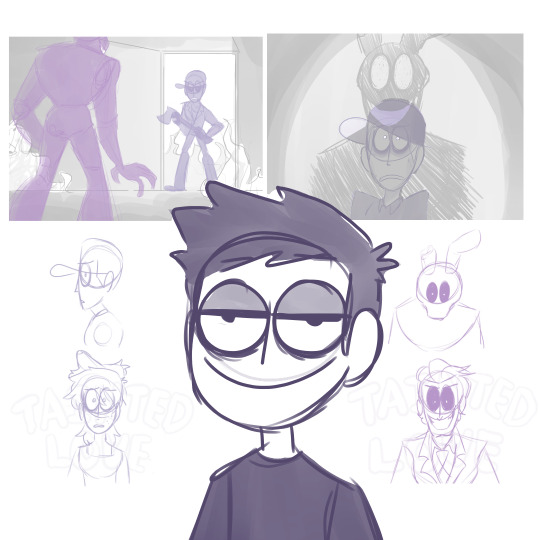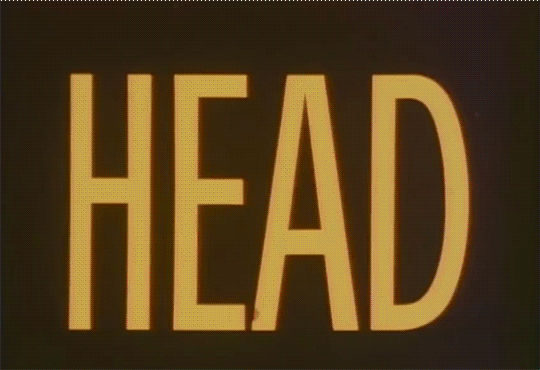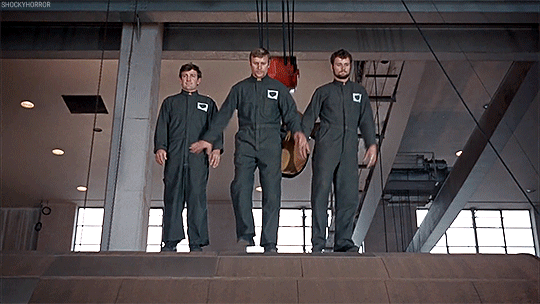#because its just mike having panic attacks realizing his father is alive
Explore tagged Tumblr posts
Note
Wanna know something that just gave me a crisis? (/hj)
Events of FNAF 3 would be taking place this year.

i’m aware
#self doodle#answering asks#fnaf#five nights at freddy's#michael afton#mike schmidt#springtrap#william afton#fnaf 3 is probably the penultimate example of soldered wires lore mixing into canon#because its just mike having panic attacks realizing his father is alive#i have a whole fight sequence between mike and william on night 6 when fazbear frights goes up in smokes#i have 2 different songs in my head that i’ve saved specifically to address fnaf 3#one of these images was an unreleased year of the spring rabbit sketch that i cleaned up#the other three existed in my head so long i had to sketch them today#i still feel guilt that i had to stop yotsr but at the same time i recognize i cant do daily art ;3;#soldered wires#soldered wires au
184 notes
·
View notes
Text
#89 Head (1968)
From the minds of Jack Nicholson and Bob Rafelson, is a 110 minute acid trip featuring The Monkees. Their television show had been recently cancelled, and this movie is essentially their former-Disney star “I’m an adult!” moment in an attempt to break free of their preassigned roles and become Serious Artists.

I cannot adequately express the despair I felt when Head literally announced there would be no plot to this movie, and would instead be a series of skits. It makes sense in the context of The Monkees, since they were formed for a television show. Each section of the movie has a different genre, ranging from a traditional Western, a boxing movie, a television commercial, a stage-performed musical number, horror... they are all here, which makes an overall narrative pretty hard to discern, other than The Monkees’ general discontentment with their current position.
It begins similarly to A Hard Day’s Night, where the Monkees are being chased by... we don’t know what yet, but we can assume it is not excited teenage girls. They then launch themselves off of a bridge, trip on LSD, find some mermaids, and hold a kissing contest that only triggered my Covid-spread panic. The movie doesn’t give you much time to breathe before it comes in hot with a football player attacking soldiers, a football stadium cheering for war, and The Monkees playing a live concert with a screaming crowd cut together with scenes of civilians being killed during the Vietnam war.
youtube
Not gonna lie, I didn't think I'd have to address the Vietnam War at all during this project (unfortunately, Meet the Feebles took that assumption away from me rather quickly). To be honest, I was really expecting this more from The Beatles, especially with John Lennon's very famous pivot to anti-war protest songs. In college, I wrote a sociology paper on the Vietnam War's influence on popular culture and the function of the media created, and not once in all my research were The Monkees even seriously cited, other than some coy allusion that “Last Train to Clarksville” might have had something to do with a soldier travelling to an army base. I was so taken aback by the opening scene of this movie, that I literally pulled out my paper and the books I had purchased to write it to see if I had missed something. There was ONE sentence about Mike Nesmith singing a protest song before he joined The Monkees. Granted, if you were alive during the 1960s, to be ignorant of the war in general would have been so incredibly tone-deaf. Had I realized this movie would be political in any way, I would have expected this. In one book, the author had compiled over 750 songs that directly addressed the war. Record sales tripled during the decade, and Woodstock might be the most famous festival we’ve ever held in the US - processing the war through music was very much *a thing*. So, of course, I had to dive into this, because my brain can't just be like, "Well, I guess The Monkees hated the Vietnam War like the majority of the population, I guess.”
There wasn’t much to find, other than this bizarre clip of Davey Jones on an 80s talk show bragging and singing about how he had evaded the draft. Turns out, the writer/director of this picture, Bob Rafelson, really controlled the message of this movie, and he inserted these scenes as commentary on the performative aspect of war, and how television “...makes you inured to the realities of life. Oh yes, it brings it into the living room, but then you don’t have to fucking deal with it. There is no distinction made between the close-up of the young girl responding hysterically to the appearance of The Monkees and to the shot of the assassination at the same time. And then the hysterical girls attack the stage where The Monkees are playing and shred their clothing off. But they’re not The Monkees, they are wooden dummies. They’ll shred anything, as long as it’s the thing to do. Rape the stage, attack the musicians, real or unreal, who cares? And it was just pointing out that there was a sort of a mindlessness to, as The Beatles used to complain all the time, to the appreciation of the music.”
youtube
There’s a lot going on in this statement... I’ll agree that the constant barrage of violence and unrest eventually numbs you to it. Especially now, with a 24-hour news cycle, and twitter just bombarding you with every fucking egregious thing going on in the world at once. A sense of hopelessness overtakes you; The doom-scrolling will only pacify you into not acting, because what the fuck can you do to change anything? There are too many problems, and they’re too large to solve on your own.
The second part of this statement, where teenage girls will do anything “as long as it’s the thing to do” is pretty insulting. I suppose the attitude of teenage girls being easily manipulated to enjoying things was amplified with Beatlemania. Its continued on, where bands like New Kids on the Block, The Backstreet Boys, and One Direction are immediately dismissed as superfluous because teenage girls like them, and teenage girls are shallow because they’re driven by their hormones. What’s unbelievably frustrating about this mindset is it has been disproved time and time again, INCLUDING The Beatles. I know more dudes who rep for them than I do women. Shit, in this dumpsterfire of a year, Harry Styles’ new album has been one of the few positive things that has kept me going, and that came out 10 months ago. With the success of kpop as well, a lot more people are starting to come around to “manufactured content that teenage girls like can be good, actually”.
The Beatles complaining about how their music is secondary to the mania about them is really rich, considering their legacy now. It’s not like they were that attractive or charming... I sat through 2 of their movies and the only person I even mildly connected with was Ringo, because he was a goofy dope. I’m fairly certain teenage girls were buying their records and going to their shows because they liked the music. As a former teenage girl, let me tell you, the illusion of depth and sensitivity is way more attractive than a pretty face.
Teenage girls made The Monkees and The Beatles successful, and for the director, who directly profited off of that success, to make a movie that criticizes them really rubs me the wrong way. Also, it was the fucking 1960s, about as volatile of a decade as you could get *until* now. Maybe teenage girls focused so much on The Monkees and The Beatles because it was one of the few uncomplicated things that could bring them reprise from the violence unfolding around them. But whatever, disparage their money lining your pockets, I guess.
The skits afterward are pretty unremarkable. Micky is in the middle of a desert trying to get happiness out of a Coke machine, only to find it, and the task itself empty. He then blows up the Coke machine with a tank given to him by the Italian army.

The Monkees are given a tour of a manufacturing facility, only to see what they are producing isn’t a quality product, and the workers themselves are either fake, or endangered by the endeavor. There’s a few scenes where they fight against their predetermined personalities in the band, or what their fans might think of their behaviors. They are used in a dandruff shampoo advertisement and vacuumed up and held hostage in a black box. There is an outstanding upbeat musical number performed by Davy (and Toni Basil!) about a boy whose father left him. He lays it all out on the dance floor, only to be criticized by Frank Zappa of all people, for not having a message in his music that will save the youth of America.
youtube
While they are searching for answers on how to escape the box they’re trapped in, or purpose in what they’ve accomplished, they find nothing. Peter tries to enlighten them with a bunch of culty bullshit, but instead Davy loses his shit and starts physically attacking literally everything featured throughout the movie, culminating in The Monkees running from their movie studio and jumping off a bridge to free themselves. They unfortunately are captured and shoved back in the black box, awaiting the next time they will be carted out to market something else for The Teens to buy.

I probably don’t need to tell you that this movie flopped. The studio purposely left The Monkees out of all the promotional material because they thought it might detract from the serious motion picture they were trying to release. The problem with this, however, is if you don’t know anything about The Monkees, this movie is not going to make sense to you. I had to watch several behind-the-scenes clips to get any semblance of an idea what they were trying to achieve. Sure, the Capitalism and Manufactured Entertainment is Bad theme is pretty easy to pick out, but why The Monkees were the ones saying this after being immersed in the middle of it for three years is an important position to understand beforehand. And even if you were a Monkees fan, like my mother was, this basically shits on their entire experience in show business, so it probably doesn’t hit too well with their core demographic, either. I respect what they were trying to do here, but it’s no mystery to me why this movie has almost entirely been lost to time.
I’d like to say this ends my series on rock bands that decided to make musical movies, but next on the list is a little story about a pinball-wizard-that-could, Tommy.
0 notes
Text
You Are What You Eat … Kinda
By Julia Mullins, Downstate School of Public Health DrPH (EOHS) Student

Christine Hurckes, a member of the OSI group, a large privately owned company offering aid and guidance to food facilities, said that “one scenario that is all too familiar is waiting for positive data to drive changes in design. That is attacking Listeria after it has crossed enemy lines … way too close for comfort. Don’t wait for positive data to start making changes. Don’t wait for the enemy to get that close.” As a food microbiologistworking for the United States Food and Drug Administration (1), I am confronted with the validity of this statement daily. I have witnessed firsthand the rollercoaster ride of the public when responding to a foodborne outbreak: the high anxiety of avoiding the types of food products as they climb the hill, the rush of panic as they realize they or their families may have consumed this product as they hang over the edge of that hill, and the relief once they feel the worst is over. They cycle through this ride over and over again. Picture this scenario that I am sure we have all experienced:
You return home from a nice dinner at the end of a long week and lay down on your couch to catch up on some TV. After binge watching the three episodes of Law and Order that you missed, you start to feel a grumble in your stomach. You ignore it for a bit, but after hearing that second famous Law and Order ‘chung-chung’ sound at the beginning of your fourth episode, you have to run to the bathroom like a hurdle jumping Olympian. This is the first of many visits you will be making to the bathroom that night and probably all the next day or so. But then, just as suddenly as it comes, it goes away, and you return to your already scheduled programming.
This is not an unlikely occurrence in our everyday lives unfortunately, but it is even more unfortunate that incidents like this go unreported. According to the FDA’s public website, there are an estimated 48 million cases of foodborne illness annually, which equates to about 1 in 6 individuals falling ill each year. These illnesses are then estimated to result in over 120,000 hospitalizations and about 3,000 deaths each year. That’s why, like the detectives on Law and Order, food microbiologists need to carefully investigate imported and domestic food products and facilities to identify the culprit.
The most likely cause of the under-reported food poisoning instances is Salmonella which typically only cause’s severe enough medical issues to seek medical treatment in immunocompromised individuals; however, bacteria such as Listeria and Enterohemorrhagic E.coli (EHEC) are much more dangerous to the general population. The names of these bacteria are probably familiar to you, but ask yourself – what you really know about them?
The FDA’s website is a great resource for recall and outbreak tracking, information about scientific advancements in food safety, laws and regulations, and anything else you would like to know in regards to food safety. You can even sign up for emails, text messages and alerts so you always have the most up-to-date information on what foods are being recalled at any particular time or get the most recent outbreak information here and here. The bottom line is that there is a ton of information out there to help you protect your family and communities food supply; you only need to know where to look.
According to the FDA’s website, and pretty much every single scientific textbook and website I have ever read, Salmonella is especially of concern for the young, elderly, and individuals with weakened immune systems. Healthy people who suffer from Salmonellosis, or an infection with Salmonella, suffer from classic food poisoning symptoms which usually self-resolve fairly quickly. However, if the bacterium finds its way into the blood stream because an individual’s immune system is too weak to fight it off, much more severe infections such as endocarditis may occur. These photos show a microscopic view of Salmonella and a visual culture of Salmonella on a special plate called Hektoen Enteric agar which causes most Salmonella to turn black.
In general, E.coli is a bacterium that is part of our normal flora, or normally lives in the intestinal tract of humans and animals. Most of these species of bacteria are harmless; however pathogenic, or disease causing E.coli such as EHEC (Enterohemorrhagic E.coli), can cause very severe and even fatal illness.Symptoms of this type of foodborne infection are the classic food poisoning symptoms, only much more sever and usually coupled with bloody diarrhea. One of the most famous examples of this type of fatal infection is the Jack in the Box outbreak of 1993 that was outlined in a New York Times article (4). This particular outbreak resulted in the tragic death of a two year old boy, whose father I had the honor of meeting at the North East Regional Retail Food Protection Seminar in 2015. After the death of his son, he decided to dedicate his life to keeping his son’s memory alive, sharing his story, stressing the importance of food safety and the laws that govern it. These photos show a microscopic view of E.coli on the and a visual culture of E.coli on a special plate called EMB agar that gives E.coli a distinctive green sheen to help identify it on the right:
Another very dangerous bacterium, and the one that I am most personally interested in studying and preventing, is Listeria. The most formidable species of Listeria is Listeria monocytogenes. It is very dangerous and extremely resilient, which causes it to be an even larger cause for concern in the food safety world. It is able to survive in refrigerated temperatures that will typically kill most other types of bacteria, and can be found in many other ‘ready-to-eat products’ such as poultry, seafood, meat and practically all dairy products. Pregnant women are one of the most susceptible groups to infection by this type of bacterium. Listeria is able to cross the placental barrier and may cause the fetus to spontaneously abort. That is the main reason pregnant women are told to avoid many types of food such as soft cheese and deli meats. These warnings should be taken very seriously. These photos show a microscopic view of Listeria and a visual culture of Listeria on a special plate called Chrome agar that gives Listeria a distinctive blue color to help identify it on the right:
Now that I have successfully scared you away from eating (for the next few hours at least), let me tell you want you can do to protect yourself and your family. First and foremost, educate yourself! Stay up to date on recalls and outbreaks and take all reports you may read about them very seriously. Also, learn the suggested temperatures for cooking and actually use a thermometer to ensure you are reaching those temperatures. See here for safe cooking guidelines from the Academy of Nutrition and Diabetics and www.foodsafety.gov.
Food microbiologists, no matter if they are working in a private or public industry, are all endeavoring to identify food that contain these nasty bacteria; however, the sad truth is that there is no best way to keep up with all the products that are imported into the country daily, that are grown or manufactured domestically, and the facilities that prepare, package or ship these products. That’s why identifying trends and targeting our search is so important. There are many methods that scientists all over the country are using to do this. The one that I am currently involved in is one of the most advanced pieces of technology, known as Whole Genome Sequencing, which is detailed on the FDA’s website as well.
Whole Genome Sequencing is a process that uses the DNA of bacteria, such as Salmonella and Listeria, to differentiate between different species of organism, as well as determine how closely two organisms of the same species are related to each other. The ultimate goal of using this technology is to build a database that can be used to more quickly identify organisms responsible for food borne illness, as well as better identify, track, stop and prevent outbreaks. By using a combined database, such as Genome Trakr, these bacteria found in foods even have the potential to be matched to clinical isolates also uploaded to the database by clinical microbiologists. Another goal of using this technology is to better public health by tracking these possible outbreaks geographically and using evolutionary biology to predict root sources of contamination for various food products; this way a harmful ingredient or condition can be stopped before the food product even enters the market.
The applications for the use of this technology in food supply protection are endless and new technologies and strategies are being developed constantly. Other potential applications include determining the effectiveness of a facilities cleaning and sanitization procedures, determining how organisms that could make us ill survive in the environment and the cooking process, or even using the technology to determine a pathogens antimicrobial or antibiotic resistance. We are extremely fortunate to live in a country where we have a general expectation of safety when it comes to the food we eat; however, there are definitely precautions we need to take to ensure our food supply stays that way. A US Senator from Nebraska, Mike Johanns, said it best, “Food safety involves everybody in the food chain.”
(1) All information and opinions stated are of my own and not reflective of the views of the agency. All information used can be found on the FDA’s public website, www.fda.gov.
1 note
·
View note